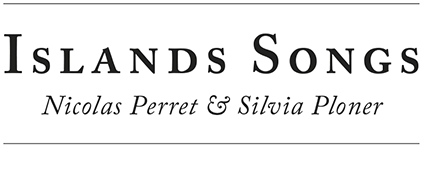The Forest Within – Within the Forest
Sound piece (English version), 39' © 2019
Text: César E. Giraldo Herrera, Islands Songs
Voices: Lucrecia Dalt, César E. Giraldo Herrera
Mix: Philippe Charriot
Sound piece (German version), 39' © 2019
Autoproduction, originally commissioned by Deutschlandfunk Kultur for Klangkunst
Broadcast date: September 17th, 2019
Text: César E. Giraldo Herrera, Islands Songs
Voices: Anne Müller, Florens Schmidt
Regie: Roman Neumann
Mix: Philippe Charriot
7-channel sound installation, 28' (loop) © 2018
Autoproduction, originally comissioned by ar/ge kunst
What if the 'invisible' beings Amerindian peoples have been interacting with have more in common with microbes than with the notions 'spirits' and 'souls' introduced by the missionaries during the colonial effort of conversion?
And what if shamans have been smelling, seeing, hearing and experiencing these beings for more than five thousand years?
And what if shamans have been smelling, seeing, hearing and experiencing these beings for more than five thousand years?
Featuring a conversation in-between a human and microbe, The Forest Within - Within The Forest explores how knowledge about microbiology can be found encoded in Amerindian narratives and understanding of the natural world.
[ A blood vessel can be perceived as a river and also as a tree. That depends on whether you acknowledge it from the perspective of a microbe or the perspective of a human. ]
Thought as both a multispecies documentary and a fabulative sound narrative, the piece interleaves human and microbial perspectives, spaces and times; exploring borders, frictions and symbioses in-between acoustic and synthetic, abstract and concrete, single organism and environment, the guest and the host, the self and the other. The River and the Tree.
***
Indigenous myths and anthropological literature give insights into the practice of shamans and the world of beings with whom they negotiate. We learn, that these beings were at the beginning of time, that they are our ancestors, that they need food, that they are responsible for fermentation and disease, that they are dressed in bright colors or are immortal.
Studying this literature one can draw an analogy between these beings and bacteria, as they are described by microbiologists. This is what Colombian Biologist and Anthropologist César Enrique Giraldo Herrera does in his recently published book Microbes and other Shamanic Beings (Palgrave Macmillan, 2018). Giraldo Herrera describes the shamanic technique of entoptic vision, their ability to see inside their bodies. The human eye has external receptors – which allow us to see – but also receptors pointing inward, which allow us to witness physical events happening within the eye. This inner vision is activated only under certain circumstances. If one is feverish and closes its eyes, for instance, one can sometimes see threads walking through the field of vision. It has been proven that this inner vision can be trained and selectively activated with the help of certain mind-expanding substances, for example. Shamans train to master this inner view, which is then used as a diagnostic method.
Departing from the assumption that shamans have not only been seeing the microscopic world flowing through their veins but are in communication with it, we wondered, what role sound plays in it. Together with Giraldo Herrera, we set off to the Colombian Amazon rainforest in Summer 2018 for a field trip. Amongst Ticuna and Yagua communities, we met shamans, fishermen, and hunters, questioning them about their sound tactics, their relations to other-than-humans while investigating the environment surrounding them.
What do shamans perceive? What can Amerindian knowledge of the natural world teach us? What if the soundscapes of tropical ecosystems, where one finds the largest microbial communities on earth, would be a key to understand sonic relations to our 'forest within'? What does microbiology know about the sonic expression of microbial milieus? What about radio waves emitted by bacteria? Such questions drove us towards the constitution of our sonic material and eventually towards the compositional framework itself.
Departing from the material recorded in the forest, we have been creating sound using biological processes, such as fermentation or fever, as guidelines to modulate field recordings and electronics, microbial frequencies and radio waves. Our idea was not to give voice to the 'non-tangible' but that the sounds themselves could be heard as forms of life and agency, as organisms with their own reason for being.
Together with Giraldo Herrera — and out of his thought and study — we have been imagining and editing a fabulation featuring two main characters: a human and a microbe. Their conversation entangles human and microbial histories and invites the auditor to rethink notions of stable personhood, identity, and subjectivity.
Special thanks to Acitam (Asociación de Cabildos Indígenas del Trapecio Amazónico, Leticia), Aticoya (Asociación indígena Tikuna, Cocama y Yagua de Puerto Nariño), Archipel Productions, ar/ge kunst, Casimiro Ahue, Camilo Giraldo Angel, Miguel Bajo, José Becerra, Felix Blume, Fabian Brinkmann, Enrico Centonze, Charo Calvo, Isabella von Dellemann, Elektronisches Studio TU Berlin, Marcus Gammel, Pierre-Yves Gauthier, Daniela Gomez, Emanuele Guidi, Maria del Mar, Rodolfo Mesa Morales, William Mozombite, Andrea Nicolò, Catalina Ramos, Reserva Natural Tanimboca, Leticia and all the beings of El Progreso, Puerto Nariño and San Martín de Amacayacu.
Produced with support from the Cultural Fund of Südtirol.
(Image: Andrea Nicolò, 2019)
Songs To You About You, exhibition handout, ar/ge kunst, September 2018


